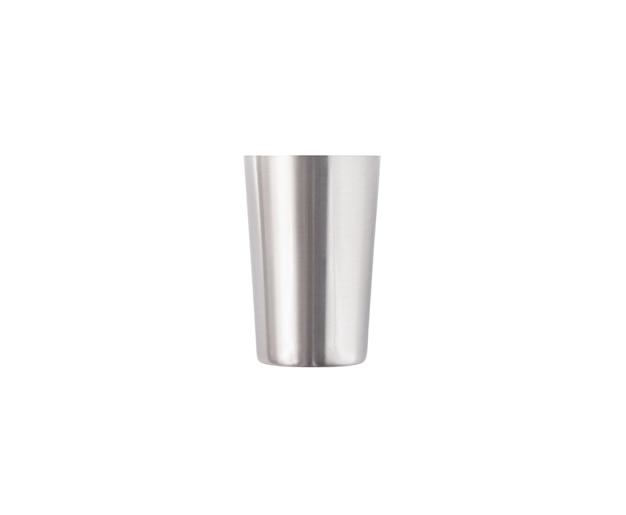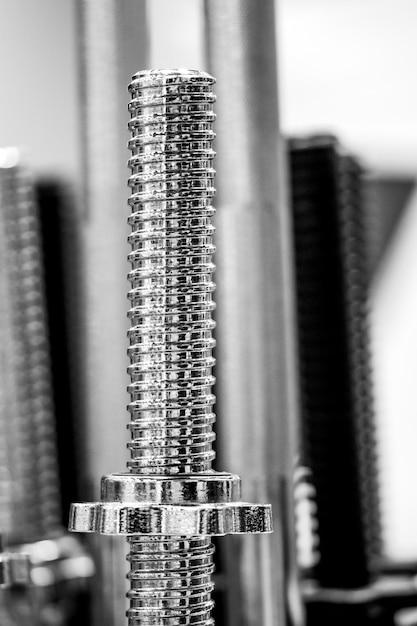Are you an avid hunter or just getting started with shotgun shooting? One essential aspect to consider is the type of ammunition you use, particularly when it comes to shotshells. Steel shot and lead shot are two common options, but what sets them apart? In this blog post, we’ll dive into the differences between steel shot and lead shot, exploring their characteristics, applications, and why you may choose one over the other.
When it comes to hunting waterfowl and certain upland game birds, regulations often require the use of non-toxic shot. This requirement stems from environmental concerns regarding the impact of lead shot on wildlife and ecosystems. While lead shot may still be used in some circumstances, steel shot has gained popularity as a suitable alternative. But is steel shot as effective as lead? Does it have any limitations? We’ll delve into these questions and more to give you a comprehensive understanding of the qualities and benefits of steel shot versus lead shot.
So, whether you’re curious about the effectiveness of steel shot, if lead shot hits harder, or why duck hunters prefer steel shot, this blog post will provide you with the information you need. Let’s delve into the world of shotshells and understand the nuances between steel shot and lead shot, so you can make the best choice for your next hunting adventure.
What Is the Difference Between Steel Shot and Lead Shot
Density Matters: The Battle of the Heavyweights
When it comes to ammunition for shotguns, the choice between steel shot and lead shot is like a showdown between Arnold Schwarzenegger and a featherweight boxer. One of them packs a mighty punch, while the other could barely make a dent. In this case, the heavy hitter is lead shot, which has been the go-to choice for hunters and shooting enthusiasts for ages. However, just like bell-bottom jeans and VHS tapes (remember those?), times are changing. Enter steel shot, the lean, mean challenger that’s shaking up the game.
Safety First: The Environmental Dilemma
Now, before we dive into the nitty-gritty details of the differences between these two types of shot, let’s address the elephant in the room: safety and the environment. Lead shot has long faced scrutiny due to its potential to contaminate soil and water, posing a hazard to both wildlife and us humans. Recognizing this concern, environmental regulations have been put in place, restricting the use of lead shot for certain hunting activities. Steel shot, on the other hand, poses less of an environmental risk, making it a cleaner and safer alternative. It’s like choosing between leaving a mess behind or being a responsible guest at Mother Nature’s party.
Ballistic Brilliance: The Penetration Game
When it comes to the science of shooting, the winner is determined by more than just metaphors involving boxers. The key metric to consider here is penetration power. While lead shot boasts dense and soft properties, steel shot holds its own by being harder and lighter. This difference in material characteristics directly affects ballistic performance. Steel shot, with its increased velocity and flatter trajectory, is like a speed demon that maintains stability and provides better long-range accuracy. So, if you’re aiming to hit targets as effectively as cupid strikes hearts, steel shot may just be your bow and arrow.
Spacing it Out: Pellet Size Matters
Size does matter, and in the world of shotshells, it’s all about pellet size. Both steel shot and lead shot come in a wide variety of sizes, and it’s important to choose the right one for your specific shooting needs. However, there’s a catch. Due to steel shot’s lighter weight, the pellets need to be larger to achieve a similar level of lethality as smaller lead shot pellets. This means if you’re looking for those classic, tight patterns, the heavier lead shot will be your best bet. But if you’re channelling your inner Hawkeye and prefer a wider spread, steel shot may be more up your alley.
The Bottom Line: Making Your Choice
Now that we’ve explored the differences between steel shot and lead shot, the ball is in your court. If you value environmental friendliness, safety regulations, and longer-range accuracy, steel shot is the way to go. On the other hand, if you want denser patterns and a greater range of available pellet sizes, lead shot remains the heavyweight champion.
So, whether you’re targeting waterfowl or clay pigeons, remember to choose wisely. After all, the success of your shot can make all the difference between the feeling of victory and the disappointment of leaving empty-handed. Happy shooting!
FAQ: What Is The Difference Between Steel Shot and Lead Shot
Welcome to our FAQ section on the difference between steel shot and lead shot! We’ve compiled a list of commonly asked questions to help shed some light on this topic. So, grab your beverage of choice, sit back, and let’s dive in!
What is 0000 buckshot used for
0000 buckshot, also commonly known as quad ott or four-aught buckshot, is primarily used for self-defense and hunting larger game such as deer. Its larger size allows for increased stopping power, making it ideal for situations that require maximum impact.
Can you hunt birds with lead shot
Unfortunately, lead shot has been banned for hunting migratory birds throughout the United States. To protect the environment and prevent lead poisoning in these birds, steel shot or non-toxic alternatives are now required. However, lead shot can still be used for hunting non-migratory birds in some regions.
What does 9 shot mean in shotgun shells
The term “9 shot” refers to the size of the shot pellets in shotgun shells. In this case, it indicates that a shell contains smaller lead or steel pellets, with about 585 pellets per ounce. These smaller pellets are typically used for hunting upland birds, such as quail or rabbits, where a denser pattern is desired.
Is steel shot good
Absolutely! Steel shot is an excellent alternative to lead for hunting. Not only is it environmentally friendly, but it also provides effective performance. Advances in shotshell manufacturing technology have significantly improved the performance and effectiveness of steel shot, making it a reliable choice for hunters.
Can I shoot ducks with lead shot
No, shooting ducks with lead shot is prohibited in the United States. Due to concerns about lead poisoning in waterfowl, federal regulations require the use of non-toxic shot, such as steel, for hunting ducks and other migratory birds. So, make sure you have non-toxic shells before you head out to bag those mallards!
Are copper bullets better than lead
Copper bullets do have their advantages. They are known for their excellent weight retention, deep penetration, and minimal fragmentation, making them effective for hunting larger game. Additionally, copper is non-toxic and poses less risk to the environment. However, it’s worth noting that copper bullets can be more expensive compared to lead bullets.
Is steel shot more unstable in flight than lead shot
No, steel shot is actually quite stable in flight. Advances in shotshell technology have made steel shot ballistically similar to lead shot. You can trust that your shots will be accurate and dependable when using steel shot.
Why do duck hunters use steel shot
Duck hunters use steel shot to comply with regulations set by the Migratory Bird Treaty Act, which prohibits the use of lead shot for waterfowl hunting. This is primarily to protect waterfowl from lead poisoning and preserve the fragile ecosystems they inhabit. So, steel shot is now the go-to choice for ethical and responsible duck hunting.
Which shotgun choke is the most opened
The most opened shotgun choke is the cylinder choke. It allows for a wide and open shot pattern, making it suitable for close-range shooting or when hunting in dense cover. It’s like the “broad smile” of shotgun chokes, giving you the best chance to hit your target in close-quarters situations.
Does lead hit harder than steel
When it comes to shotgun ammunition, the impact force of lead and steel shot is relatively similar. Both materials have their own unique characteristics, but there isn’t a significant difference in terms of hitting power. So, it’s more about shot placement and selecting the appropriate shot size for your specific shooting needs.
Why is lead shot illegal for waterfowl
Lead shot is illegal for waterfowl hunting due to the potential for lead poisoning in birds. Waterfowl often ingest small lead pellets when feeding, mistaking them for food. Lead poisoning can be fatal for these birds and has detrimental effects on their populations and the health of the environment.
Does lead shot decompose
Over time, lead shot can corrode and fragment, releasing small particles into the environment. While lead is a naturally occurring element, its accumulation in the environment poses risks to wildlife and human health. That’s why the shift towards non-toxic alternatives, such as steel shot, has become increasingly important.
Are lead bullets illegal in war
Yes, lead bullets are generally considered illegal under the Hague Convention of 1899, which prohibits the use of bullets that easily expand or flatten in the human body. This prohibition aims to minimize unnecessary suffering and ensure more humane warfare.
Is lead heavier than steel
Yes, lead is indeed heavier than steel. On average, lead is approximately 65% denser than steel. This difference in density affects the ballistic characteristics of the shot, including factors such as range, penetration, and energy transfer.
Which shotgun shell does the most damage
When it comes to maximizing damage, larger shot sizes, such as 00 buckshot or slugs, tend to be the best choices. These shells pack a hefty punch and are commonly used in self-defense or situations where maximum stopping power is required.
What shotgun has the tightest shot pattern
Shotguns equipped with a full choke barrel tend to have the tightest shot patterns. The full choke constriction squeezes the shot column, resulting in a denser pattern with fewer stray pellets. This tighter pattern is advantageous when shooting at longer distances, providing better accuracy and increasing the chances of hitting your intended target.
Does steel shot produce a larger pattern than lead shot
No, steel shot generally produces tighter patterns compared to an equivalent lead shot size due to its lower density. Steel shot needs to be one or two sizes larger than lead shot to achieve similar patterns. So, if you’re swapping from lead to steel shot, remember to adjust your shot size accordingly.
Is Buckshot lead or steel
Buckshot can be both lead or steel depending on the manufacturer and the specific product. Traditionally, buckshot has been made of lead, but to comply with non-toxic shot regulations for hunting waterfowl, steel buckshot and various non-toxic alternatives are also available.
That wraps up our FAQ section on the difference between steel shot and lead shot. We hope it has provided you with valuable insights into this topic. Remember to check your local hunting regulations to ensure you’re using the appropriate shot type when you head out into the field. Happy shooting!

